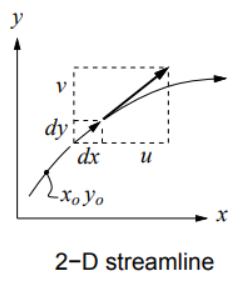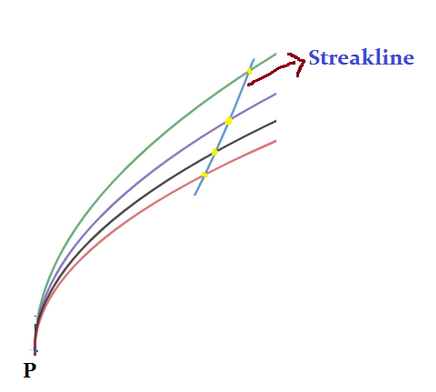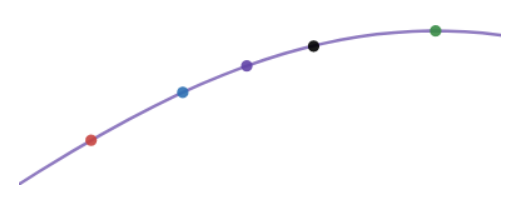
Define streamline, streak line and path line and give their differences.
Answer
584.7k+ views
Hint: These are paths taken by the fluids in motion. It can vary for laminar or turbulent flow.
Complete step by step answer:
Stream lines are tangential curves which are tangential to the velocity vector of the flow. These lines depict the path through which massless fluid elements travel with any point of time. It can also be defined as lines parallel to the velocity vector of the fluid.

Streaklines are loci of points of all fluid particles that have passed continuously through a point in space in the past. An example of a streakline is the continuous line of smoke emitted by a chimney, which will have some curved shape if the wind has a time-varying direction. A streakline involves the motion of all the fluid elements along its length.

Pathlines are known as the trajectories individual fluid particles follow. The direction of the path taken will be determined by the streamlines of a fluid at each point of time. A figure of a pathline is given below,

Stream lines do not intersect each other since at a particular point a particle can’t have two different velocities. Streak lines also do not intersect because it is impossible to describe two particles at the same position at the same instance of time. However, path lines can intersect each other, because different particles can cross the same point in a particular interval of time.
Stream lines give the instantaneous picture of a particle in a fluid flow. While streak lines and path lines give the particle motion in a particular period of time.
Note: In steady flow of the fluid all streamline, streak line and path lines coincide with each other.
The curvature of a streamline is related to the pressure gradient acting perpendicular to the streamline. The center of curvature of the streamline lies in the direction of decreasing radial pressure.
Complete step by step answer:
Stream lines are tangential curves which are tangential to the velocity vector of the flow. These lines depict the path through which massless fluid elements travel with any point of time. It can also be defined as lines parallel to the velocity vector of the fluid.

Streaklines are loci of points of all fluid particles that have passed continuously through a point in space in the past. An example of a streakline is the continuous line of smoke emitted by a chimney, which will have some curved shape if the wind has a time-varying direction. A streakline involves the motion of all the fluid elements along its length.

Pathlines are known as the trajectories individual fluid particles follow. The direction of the path taken will be determined by the streamlines of a fluid at each point of time. A figure of a pathline is given below,

Stream lines do not intersect each other since at a particular point a particle can’t have two different velocities. Streak lines also do not intersect because it is impossible to describe two particles at the same position at the same instance of time. However, path lines can intersect each other, because different particles can cross the same point in a particular interval of time.
Stream lines give the instantaneous picture of a particle in a fluid flow. While streak lines and path lines give the particle motion in a particular period of time.
Note: In steady flow of the fluid all streamline, streak line and path lines coincide with each other.
The curvature of a streamline is related to the pressure gradient acting perpendicular to the streamline. The center of curvature of the streamline lies in the direction of decreasing radial pressure.
Recently Updated Pages
Master Class 8 Maths: Engaging Questions & Answers for Success

Class 8 Question and Answer - Your Ultimate Solutions Guide

Master Class 7 Maths: Engaging Questions & Answers for Success

Class 7 Question and Answer - Your Ultimate Solutions Guide

Master Class 6 Maths: Engaging Questions & Answers for Success

Class 6 Question and Answer - Your Ultimate Solutions Guide

Trending doubts
What is meant by exothermic and endothermic reactions class 11 chemistry CBSE

Which animal has three hearts class 11 biology CBSE

10 examples of friction in our daily life

One Metric ton is equal to kg A 10000 B 1000 C 100 class 11 physics CBSE

1 Quintal is equal to a 110 kg b 10 kg c 100kg d 1000 class 11 physics CBSE

Difference Between Prokaryotic Cells and Eukaryotic Cells




